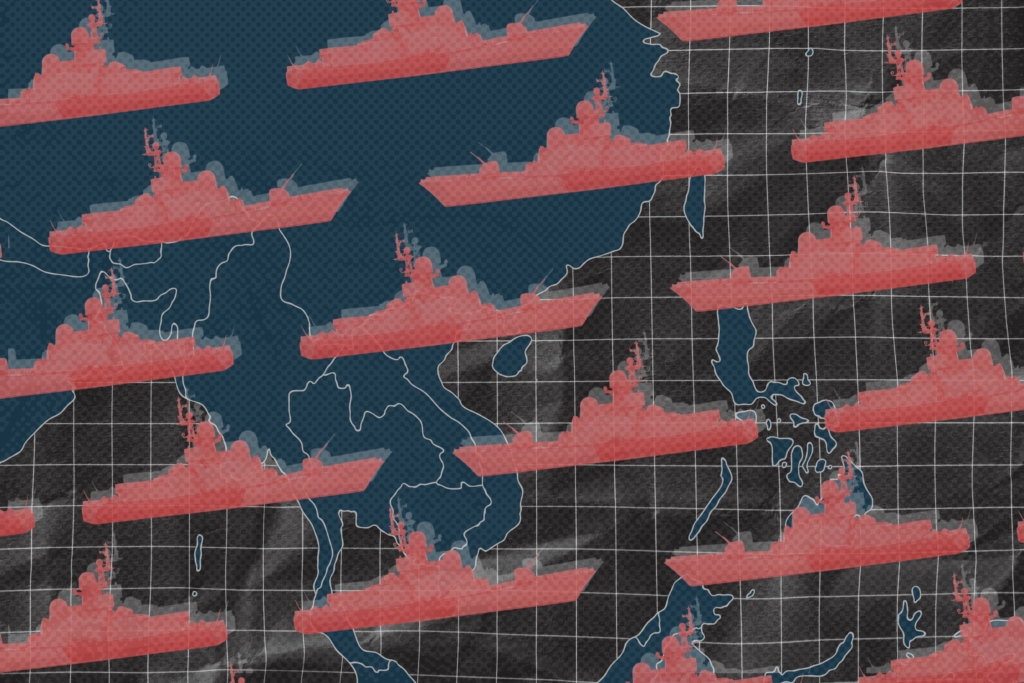News on China’s actions in WPS need to shift focus

MEDIA FOLLOWED recent incidents in the West Philippine Sea as Chinese vessels engaged in maneuvers to block patrol boats of the Philippine Coast Guard (PCG) on February 12. The news on February 17 also reported the disturbing allegation of China’s use of cyanide, causing damage to the resources and the waters of Bajo de Masinloc, also known as Scarborough Shoal.
Although China’s harassment of Philippine vessels and Filipino fisherfolk has been going on for years, reportage has remained episodic, presenting each development in isolation of the larger pattern of China’s actions in the West Philippine Sea.
Dangerous maneuvers, pollution of waters
On February 11, ABS-CBN News, GMA News Online, One News, and the Manila Bulletin reported the “dangerous and blocking maneuvers” of Chinese vessels against PCG’s vessel, the BRP Teresa Magbanua, which was on a mission to deliver supplies to Filipino fishermen in the area.
Only Inquirer.net picked up the point raised by PCG Spokesperson Jay Tarriela during the Bagong Pilipinas Ngayon public briefing on February 12. He said that Chinese vessels shadowed PCG 40 times and blocked national vessels four times, adding that these actions violated the International Regulations for Preventing Collision (COLREGS).
The Inquirer.net report and follow-up coverage from other news outfits did not refer to other reported incidents when China engaged in “dangerous and blocking maneuvers.” Both the PCG and the Armed Forces of the Philippines had used the term in describing previous incidents. Media neither asked whether those past incidents also violated the COLREGS, nor inquired into venues where the country could seek redress.
News accounts did not include what steps the government could take to hold the Chinese militia accountable for these violations. The story effectively ended with a mere recollection of yet another attack.
An even more alarming development was revealed by the Bureau of Fisheries and Aquatic Resources (BFAR). ABS-CBN News, News 5, Inquirer.net, Philstar.com, and Manila Bulletin reported the briefing on February 17 when Nazario Briguera, Chief Information Officer of BFAR revealed Filipino fishermen notified his agency about the alleged use of cyanide in Bajo de Masinloc by Chinese and Vietnamese fisherfolk.
Rappler reported on February 20 that cyanide “can either cause coral bleaching or kill coral outright.” Briguera himself said in the same briefing that cyanide fishing is “a serious concern that we need to condemn,” as seas and currents are interconnected. No reports sought the views of the Department of Environment and Natural Resources.
Reports did say that the National Task Force on the West Philippine Sea would investigate and gather evidence on the alleged use of cyanide but they did not include any information about what the government could do to check these actions. News cited President Ferdinand Marcos Jr., who expressed his support for the case if there is “enough ground” to do so.
But as of this writing, there has been no news about any government-initiated investigation.
Is PH sovereignty meaningless?
The aim is for meaningful coverage. The recording of charges that have yet to be proven, and repetitive accounts that have no follow up establishes the bullying conduct of China as a norm and as a reality Filipinos have to accept.
Reports that rely on statements and claims often include China’s denial of these claims. Journalists should be able to refer to the evidence that exposes the lie and point to it in the same account.
It is important then for journalists to assess whether the current administration has the political will and the capacity to check China’s bullying and outright dismissal of Philippine sovereignty. Media coverage should drive the government to undertake the necessary steps, so it can seek redress for its grievances. There are enough experts who can point to international venues in which to pursue its claims as the Philippine government had done before.
Media should not wait for the next incident to take the narrative to another level. Journalists should ask what the government intends to do about this constant harassment of our maritime forces and fishers in our own seas. What are the options open to them and what are they doing about them? Are the agencies even keeping a record of these incidents and other actions that destroy natural resources? Are the agencies working together? Is the task force working effectively?
The answers to these questions determine what lies ahead in the West Philippine Sea.
Leave a Reply